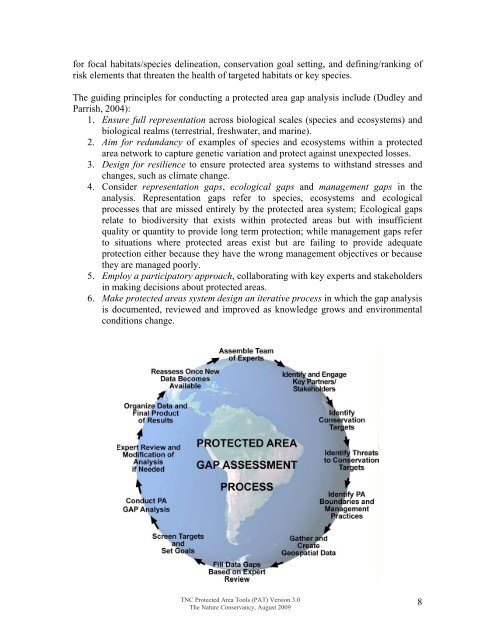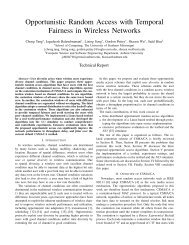Download the Tutorial
Download the Tutorial
Download the Tutorial
You also want an ePaper? Increase the reach of your titles
YUMPU automatically turns print PDFs into web optimized ePapers that Google loves.
for focal habitats/species delineation, conservation goal setting, and defining/ranking ofrisk elements that threaten <strong>the</strong> health of targeted habitats or key species.The guiding principles for conducting a protected area gap analysis include (Dudley andParrish, 2004):1. Ensure full representation across biological scales (species and ecosystems) andbiological realms (terrestrial, freshwater, and marine).2. Aim for redundancy of examples of species and ecosystems within a protectedarea network to capture genetic variation and protect against unexpected losses.3. Design for resilience to ensure protected area systems to withstand stresses andchanges, such as climate change.4. Consider representation gaps, ecological gaps and management gaps in <strong>the</strong>analysis. Representation gaps refer to species, ecosystems and ecologicalprocesses that are missed entirely by <strong>the</strong> protected area system; Ecological gapsrelate to biodiversity that exists within protected areas but with insufficientquality or quantity to provide long term protection; while management gaps referto situations where protected areas exist but are failing to provide adequateprotection ei<strong>the</strong>r because <strong>the</strong>y have <strong>the</strong> wrong management objectives or because<strong>the</strong>y are managed poorly.5. Employ a participatory approach, collaborating with key experts and stakeholdersin making decisions about protected areas.6. Make protected areas system design an iterative process in which <strong>the</strong> gap analysisis documented, reviewed and improved as knowledge grows and environmentalconditions change.TNC Protected Area Tools (PAT) Version 3.0The Nature Conservancy, August 20098
















